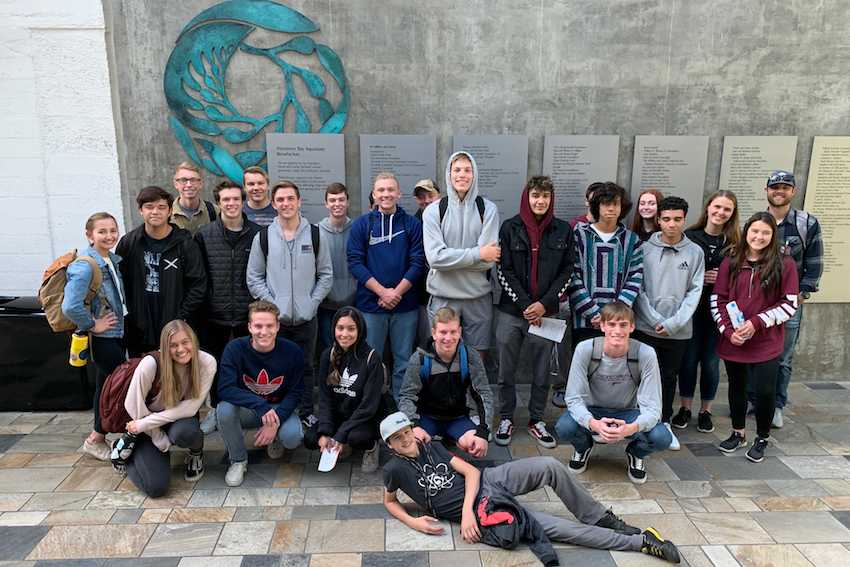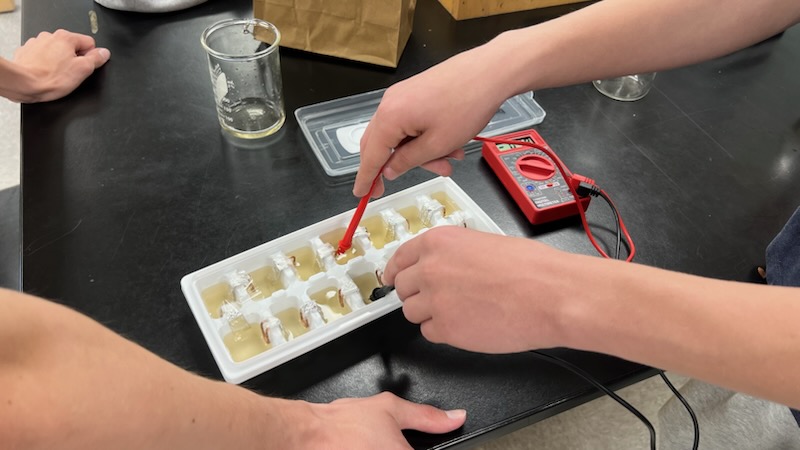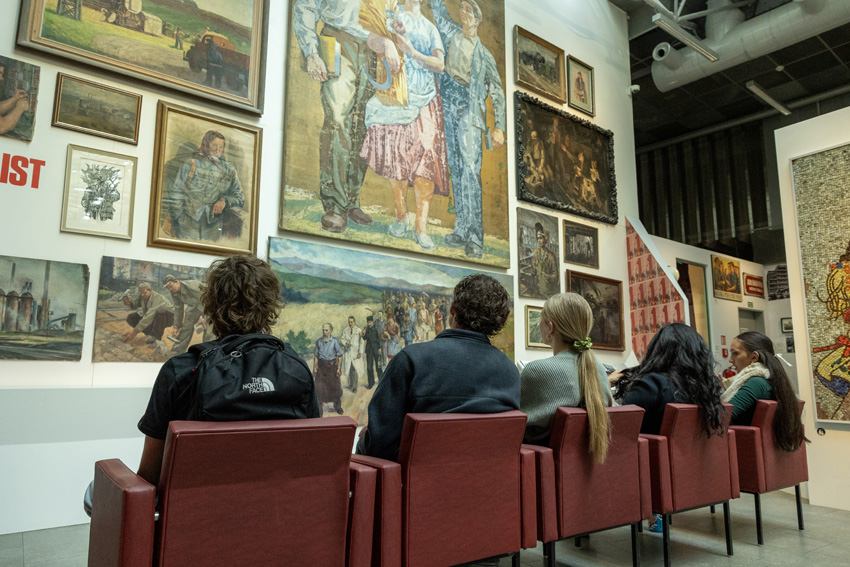Teacher Nathan Case embraces interactive learning
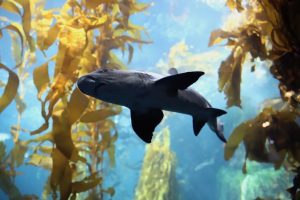
While most of the student body were still asleep, first and fifth-period zoology students were ready to leave for the Monterey Bay Aquarium at 5:30 a.m., Nov. 21. Nathan Case took his class to the aquarium in order to further the students’ understanding of California’s marine ecosystem and the ocean’s biodiversity.
Monterey Bay Aquarium hosts over 35,000 creatures, representing over 550 species. With nearly 200 exhibits in all, the aquarium offers a glance into the sea.
The aquarium first opened its doors in 1984 after converting the Hovden Cannery, built-in 1916. In October 2014, the Aquarium celebrated 30 years of inspiring ocean conservation through its exhibits, education, research and conservation programs.
The students began the trip with a lab, led by S.T.E.M. Integration Specialist Athena Barrios. Barrios has worked with Monterey Bay Aquarium for over 5 years, and focuses on integrating tech into all secondary programs within the Education Division.
In the following podcast, senior Logan Lewis discusses the importance of ocean conservation with Athena Barrios.
In the lab, students engaged in activities using graphs, formulas, and even virtual reality headsets to further understand the procedures of biologists that help them understand biodiversity in the ocean ecosystems.
“One of our philosophies in our mission is to inspire conservation of the ocean,” Barrios said. “We recognize not everyone lives near the ocean, but we still want you to get the feel that you’re connected to it. So understanding the human connection in a water shed and how actions by humans still affect a larger system like the ocean.
“Whether that’s consumption of goods,” Barrios continued, “where you source your food, if you’re driving a lot, using fossil fuels, the energy you use, all of those things are connected to the ocean in some way, it’s just about recognizing what the connections are.”
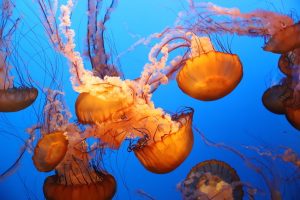
Inside the aquarium, students witnessed exhibits displaying the diverse kelp forests, alien-like jellyfish sanctuaries, puffin burrows and much more.
Some of junior Kyle Clem’s favorite exhibits were the kelp forest and a scuba diver cleaning one of the tanks. However, his favorite is always the mammals native to Monterey.
“My favorite species was the sea otters,” Clem said. “Whenever we go to the aquarium they’re always my favorite because of how different they are than the others. They’re so social, and it’s fascinating to watch their movements and interactions with each other, whether it’s playing or fighting for food.”
Senior Blake Deffenbacher’s favorite exhibit was the Open Sea, the Aquarium’s largest display. Guests gather around a 90-foot window to watch tuna speed across, sardines swarm and sunfish lurk in the shadows of the tank.
“The open sea exhibit was fascinating,” said Deffenbacher. “It’s so cool getting to see these massive creatures swim around, interacting with one another. We got to see them eat, and we were shocked by how fast the fish could swim. It was one of the best exhibits at the aquarium by far.”
The following tweet shows the group of 24 zoology students posing for a group picture in the lobby of the Monterey Bay Aquarium.
Zoology class visits @MontereyAq today, Nov. 21, to study biodiversity in ocean ecosystems. Teacher Nate Case will lead students in a study of starfish as well as other marine life, including sharks. For more information, read #thefeather promo article. https://t.co/hmTFj2fJdG pic.twitter.com/qryRAPbOZv
— The Feather Online (@thefeather) November 21, 2019
After the aquarium, students ate lunch along the historic Cannery Row. Most purchased food from seaside restaurants and enjoyed a meal overlooking the sea. Junior Carston Saelzler ordered a bowl of clam chowder from The Fish Hopper and took it down to the beach.
“Lunch was delicious,” Saelzler said. “It was a very relaxing experience, eating lunch with my friends in one of my favorite cities. I had a great time.”
The following video by senior Braden Bell features a recap of the zoology trip to Monterey, Nov. 21.
For more information on protecting our oceans, see Plastic accumulates in Atlantic Ocean, trash vortex swells.
Logan Lewis can be contacted via Instagram, Twitter, and email.

